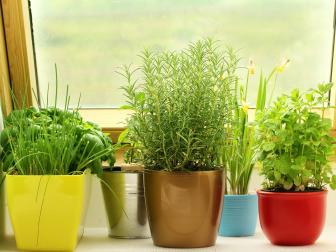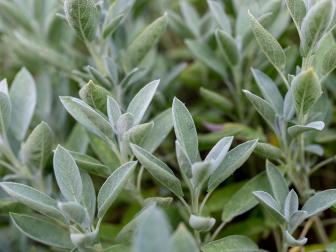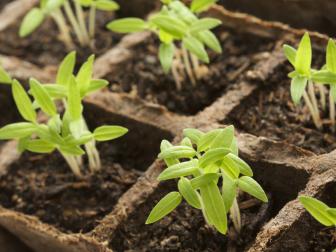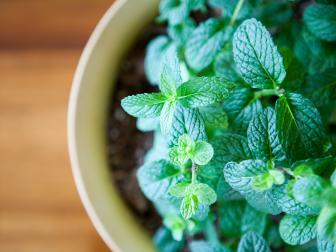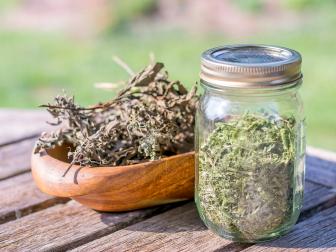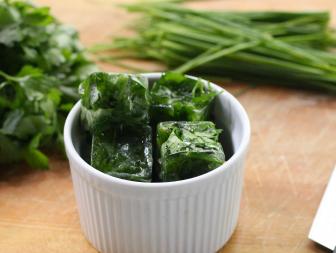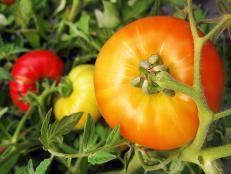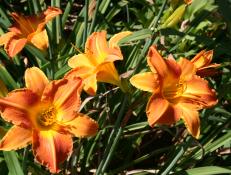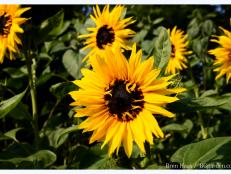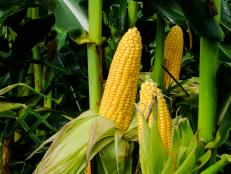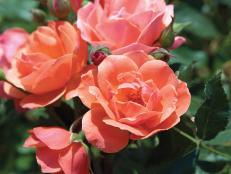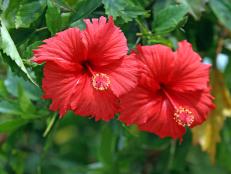How to Plant a Kitchen Herb Garden
Herbs are easy to grow, they don’t take up a lot of space and they are a healthy way to add more flavor to your cooking. Whether you’re a beginning gardener or looking to elevate your culinary skills, an herb garden is the way to go.
Having fresh herbs on hand is always a great idea whether you use them for cooking, making your own natural beauty products or simply enjoying their look and aroma. Most common herbs can be grown indoors as well as outside. They adapt easily to life in containers, so grow them on a windowsill or outside on the patio.
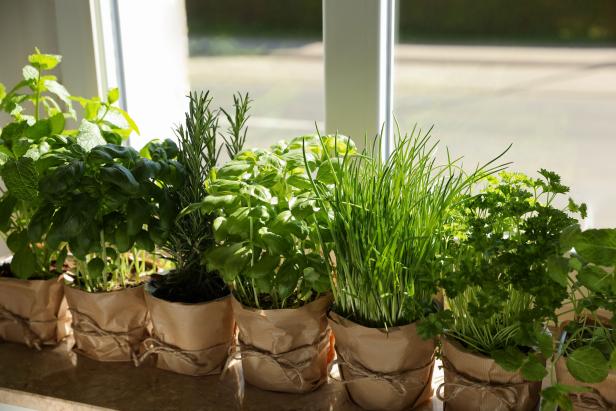
New Africa
Deciding What Herbs to Grow
Of course, you’ll want to grow your favorite flavor and fragrance herbs. But also think about which herbs you can reasonably care for. Some herbs are super-simple to grow and can be used in a variety of dishes, like chives, peppermint and parsley. Basil and thyme require more sunlight and can be a little more difficult to grow indoors, especially during the shorter days of winter when you have to use a grow light. Most herbs need about six to eight hours of sunlight in order to thrive.
Space is another consideration. Certain herbs like bay laurel, rosemary, lemongrass and lavender can grow into shrubs. If planting outside, give them plenty of space to expand. If growing indoors, be sure to trim them back often to keep their size in check.
Some herbs yield a surprisingly large amount. For typical culinary purposes, a single rosemary, oregano or tarragon plant should suffice. But if you plan to dry oregano, you might need two plants. If you hope to freeze a year’s worth of basil pesto, you’ll need probably 10 to 12 plants.
Companion Planting for Herbs
If you are planting different herbs in the same container or in a small garden bed, make sure their growing needs — soil, water and sunlight — are similar. For example, basil, cilantro and parsley all like moist but well-draining soil, a lot of direct light and they do best when they are harvested often so, they can be planted in the same vessel or garden bed. Herbs like rosemary, thyme and sage prefer sandy soils that can dry out between watering, so don’t put them in the same pot as the previous group. But, all of the previously mentioned herbs like a lot of sunshine, so you can give them the same light exposure, just make sure they're in different containers for watering purposes.
A–Z Advice for Companion Planting in Your Vegetable Garden 16 Photos
Find detailed info and links for specific companion plants and planting techniques for popular vegetable garden crops in our alphabetical list, from beets to zucchini.
Growing Herbs Indoors
Herbs come in a wide range of sizes to fit just about any pot, planter or hanging basket. Give each one its own container or combine several of your favorites in a larger planter to create a mini garden. An all-purpose, soil-less potting mix usually works well for these plants. If you plan to harvest from your potted herbs, it’s a good idea to cover the surface of the potting mix with aquarium gravel or pebbles; that prevents the mix from splashing up when you water, so the leaves stay clean. Give your herbs lots of light: ideally, eight hours or more of sun a day.
Indoor Herb Gardens
13 Easy Herbs to Grow Indoors 14 Photos
Growing Herbs Outdoors
Ideally, the best place for your outdoor kitchen herb garden would be as close to your kitchen as possible. But that’s not always possible. Look for a spot that gets 6 to 8 hours of direct sun a day. Although, during the heat of the summer, depending on what herb you are growing, too much sunlight may scorch your plants. If you’re concerned that may be a possibility, plant your herbs in containers so they can easily be moved to the shade when needed — plant stands with casters make it easy.
Containers are also a great way to test out a garden spot. If you’re not sure you want to plant in a certain area, try just using a container in that spot for one growing season. If your plants thrive there, start amending the soil in the fall so you can replant there the following spring. Many perennial herbs can be transplanted in the fall, so you can transfer your container herbs into the ground.
Seeds or Transplants?
Once you decide what herbs you want to grow, you’ll need to do your research on the best method for obtaining your new herb plants. Some herbs like basil, parsley, cilantro and marjoram are easy to start indoors from seed and then moved outdoors when warm weather prevails. Starting from seed takes more work, but it can also save money and let you start gardening earlier in the season — like in February. Herbs such as tarragon, sage, thyme, parsley and chives are slow growers, so go ahead and buy seedlings from a nursery. Chervil and dill can be directly sown into the ground. Again, do your research and read the seed packet for each type of herb. (Speaking of dill and cilantro, do not plant them near fennel, they may cross-pollinate causing neither one of them to flourish.)
How to Start Seeds Indoors
Starting seeds indoors in winter helps you get a jump on your spring and summer gardening goals. Seed starting may also save you money in the long run, and, no matter your age, it’s a great way to learn about how plants grow.
Growing Habits
Herbs come in every size and shape. Some make great ground covers while others can make great upright border plants, perfect for sprinkling into your landscape beds. Some herbs vine down so they make a wonderful addition to hanging baskets and planters.
- Herbs to grow for ground covers (less than 1’ tall): Sweet woodruff, creeping thyme, lemon balm, Roman chamomile, nasturtiums, sage and many varieties of mint. However, mint can be an aggressive grower, thus many gardeners prefer mint in containers.
- Herbs for short borders (1’ to 2’ tall): Try rosemary, lemongrass, borage, French sorrel, stevia and chives.
- Tall border herb plants (2' or taller): These include fennel, coneflowers, English lavender, lovage, German chamomile, yarrow and anise hyssop.
- Trailing herbs for hanging baskets: Try creeping thyme, oregano, creeping rosemary, marjoram, winter savory, nasturtiums and mint.
24 Herbs That Grow in Some Shade 24 Photos
From culinary favorites like parsley and mint to medicinal go-tos like angelica and nettle, these shade-loving herbs will thrive in low light gardens.
Prepare the Soil for Planting
Prepare the area for planting by loosening the soil. Most herbs prefer soil that stays somewhat moist but doesn't flood, so make sure the soil drains well and doesn’t saturate. If the soil is compacted or consists of heavy clay, improve drainage by adding some compost, peat moss or coarse sand. Work the material into the top foot of the soil before you plant. Place herbs with similar growing conditions together.
If you are starting herbs from transplants and not seeds, create larger planting holes. Dig each hole to about twice the width of the root ball of the new plant. Space the bedding plants about 18 inches apart to give them room to spread out and grow. Place taller herbs like sage, rosemary and lavender toward the back of the garden, and place parsley and cilantro at the front. Add labels or tags to each of your freshly planted herbs to make them easy to identify.

Harvesting Herbs
Begin harvesting from the herbs as soon as they are mature, but take only a little bit each time you harvest. If you remove more than a third of the plant at one time, it takes longer to recover and produce new foliage. To promote branching, keep the tops of the plants pinched back in early summer. With judicious picking, most herbs can be harvested for several months. Tip: Fresh herbs taste best when harvested in the morning. Also, herbs are most flavorful if harvested before they bloom.








